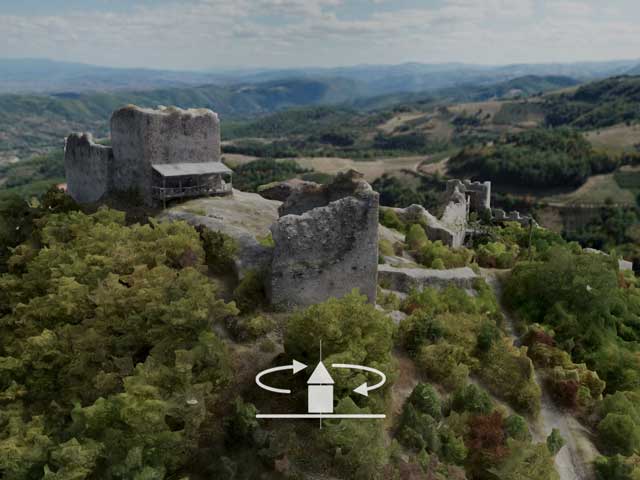MEDIEVAL TOWN Koznik
Protected cultural monument of great importance, listed as SK 172 with the Republic Institute for the protection of monuments of cultural heritage.
MEDIEVAL TOWN KoznikBrus
Location
Medieval town of Koznik was built on a 921 m high cone-like elevation, on the slopes of Zeljina, near the village of Grcak, dominating over a large area of Zupa and the valley of Rasina river. The town is surrounded by steep cliffs on three sides, and the passage is only possible from the western side, thanks to a milder slope. It is 8 km away from Aleksandrovac and about 10 km from Brus.
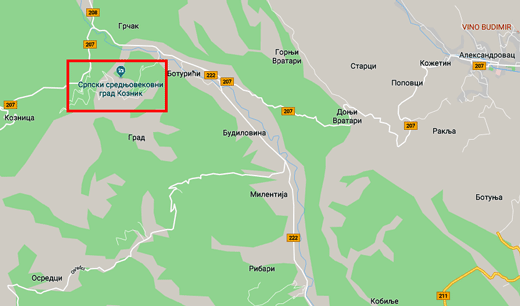
Research
The first archaeological research begun in 1970 and lasted until 1973. The fortification was cleared from bushes and vegetation, partly conserved, and the keep was strengthened. The research continued in 1978, but was disrupted the following year. The conservatory work was performed between 1981 and 1986 and in 1988. A water cistern was discovered, 5 m in diameter, within which there were four 4.2 m deep wells, with the level of water on 3.2 m. The cisterns in such fortifications were mostly dug in the rock and filled with pebbles in order to filtrate water. The water was taken from a well inside the cistern, covered in tiled stone. The supply of fresh water and food was very important for every fortification, especially during a siege, as the defense highly depended on it.
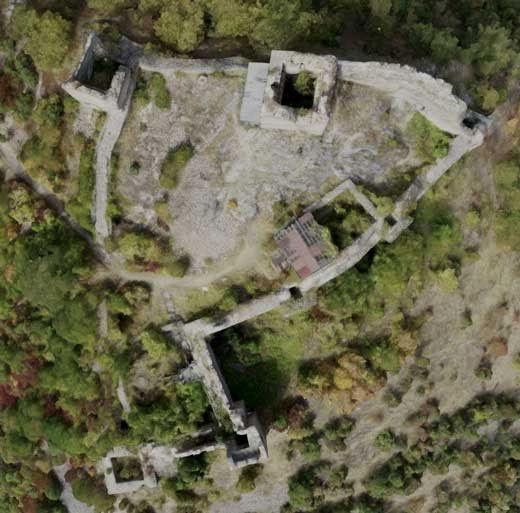
In the south part of the fortification, between the cistern and the southern rampart, a large paved surface was discovered, covered by a layer of gray vertisol. In the eastern part of this area there used to be a hearth tiled with brick with a thick layer of ashes and soot.
History
The first mention of Koznik was in 1381 in the charter that prince Lazar sent to the Lavra of St. Athanasius in Mount Athos, “written in the noble city of Koznik”. The building of the town corresponds with prince Lazar’s rule, and the town itself is associated with the name of a great lord Radic Postupovic, better known in folk poetry under the name of Oblacic Rade. It is known that despot Stefan Lazarevic passed two laws in Koznik in 1405, by which he gave all surrounding villages and the church on the Grabovnicica river to Radic Postupovic. The Turks finally conquered the fort at the same time as the city of Krusevac, 1454-1455. They ruled it for two centuries and in 1689 the fort was taken by Serbian rebels. After the Austrian-Turkish war, the fort was abandoned.
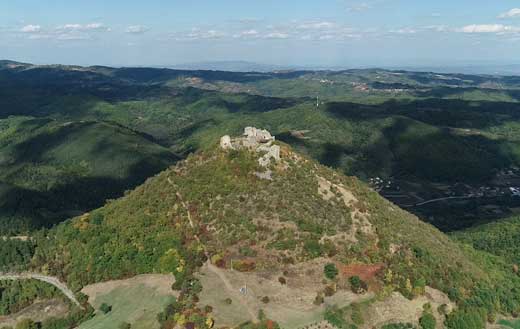
Description
Koznik fort is irregular in its base, the walls are grounded on the rock and follow the configuration of the terrain. The ramparts are 1.5 m thick and were reinforced with 8 towers. The walls are made of crushed stone bound by lime mortar. The fort is about 60 m at its longest and the width is approximately 45 m.
Two north towers, bigger than the others, could serve as living areas, while the others were a part of defense system and are much smaller. The entrance gate was on the northeast wall, which was the main entrance to the fort.
One part of a larger edifice was discovered in the northeast part of the fort. Judging by the large quantity of frescoes fragments, these are the remains of a church, which was dated as late 14th or early 15th century, thanks to the discovered fragments of ceramic vessels found among the frescoes.
To the south of the fort, on the gentle slopes, were the outskirts. The remains of some buildings are still visible today on the surface of the terrain. In the western part of the suburbs are the remains of a tower that guarded the entrance to the city.
Folk belief
In the folk lore, Koznik is also known as “Jerina’s town”, one of the many built by “cursed Jerina”, although Koznik cannot in any way be associated with the wife of despot Djuradj. The story that links the fort to “Rajko of Rasina” or “Oblacic Rade”, that is, to Radic Postupovic, is much closer to the truth.
Another story says that the name Koznik came to be as the goats (“koze” in Serbian) were the only creatures who could carry the materials needed for the construction of the fort up the steep cliffs.
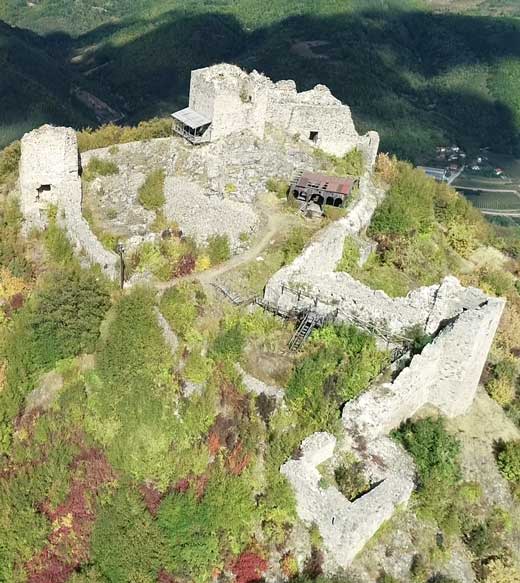
Koznik – the City of Knights
With the aim of reviving the Koznik fortress, a tourist manifestation “Koznik- the City of Knights” was founded by the municipalities of Aleksandrovac and Brus. Knights’ tournaments, rich dining experiences in the natural surroundings, as well as medieval arts and crafts successfully recreate the image of Medieval Serbia.
Julka Kuzmanović Cvetkovićarcheologist
